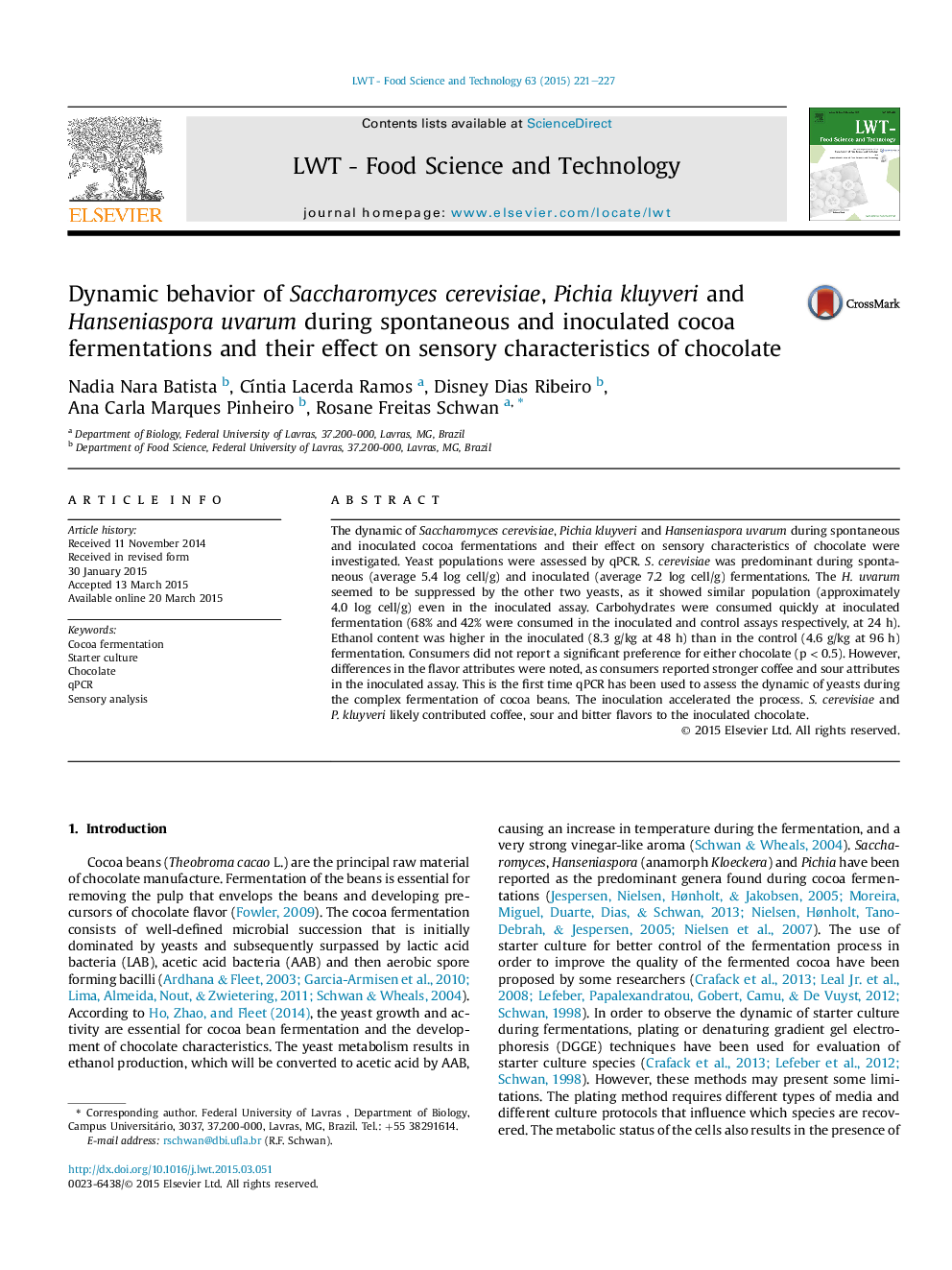| Article ID | Journal | Published Year | Pages | File Type |
|---|---|---|---|---|
| 6402024 | LWT - Food Science and Technology | 2015 | 7 Pages |
â¢S. cerevisiae was dominant in control and inoculated cocoa fermentations.â¢H. uvarum was suppressed by the inoculated yeasts S. cerevisiae and P. kluyveri.â¢This is the first time to use qPCR to study yeasts dynamic during cocoa fermentation.â¢The inoculation accelerated the process.â¢Inoculation likely contributed coffee, sour and bitter flavors to the chocolate.
The dynamic of Saccharomyces cerevisiae, Pichia kluyveri and Hanseniaspora uvarum during spontaneous and inoculated cocoa fermentations and their effect on sensory characteristics of chocolate were investigated. Yeast populations were assessed by qPCR. S. cerevisiae was predominant during spontaneous (average 5.4 log cell/g) and inoculated (average 7.2 log cell/g) fermentations. The H. uvarum seemed to be suppressed by the other two yeasts, as it showed similar population (approximately 4.0 log cell/g) even in the inoculated assay. Carbohydrates were consumed quickly at inoculated fermentation (68% and 42% were consumed in the inoculated and control assays respectively, at 24 h). Ethanol content was higher in the inoculated (8.3 g/kg at 48 h) than in the control (4.6 g/kg at 96 h) fermentation. Consumers did not report a significant preference for either chocolate (p < 0.5). However, differences in the flavor attributes were noted, as consumers reported stronger coffee and sour attributes in the inoculated assay. This is the first time qPCR has been used to assess the dynamic of yeasts during the complex fermentation of cocoa beans. The inoculation accelerated the process. S. cerevisiae and P. kluyveri likely contributed coffee, sour and bitter flavors to the inoculated chocolate.
